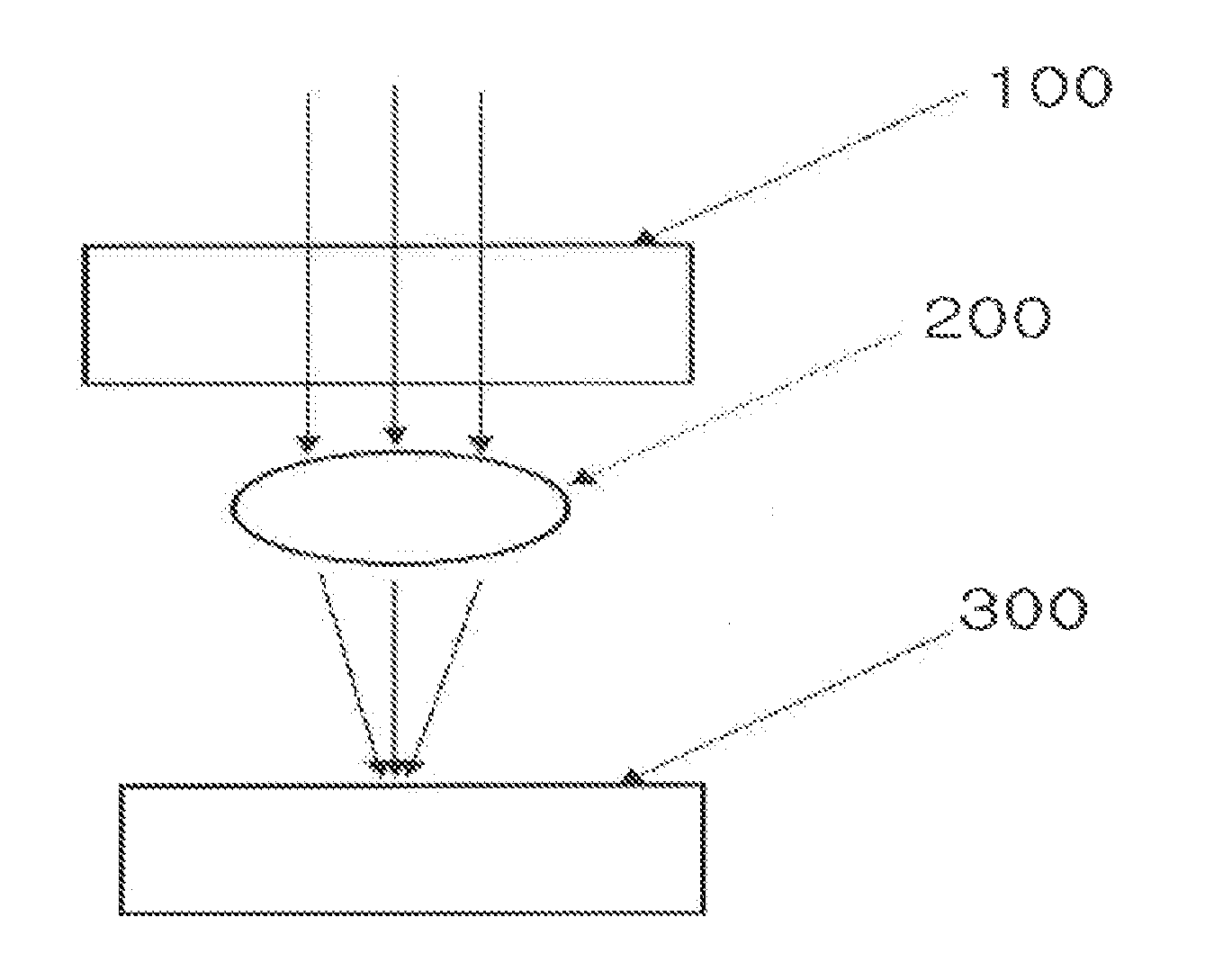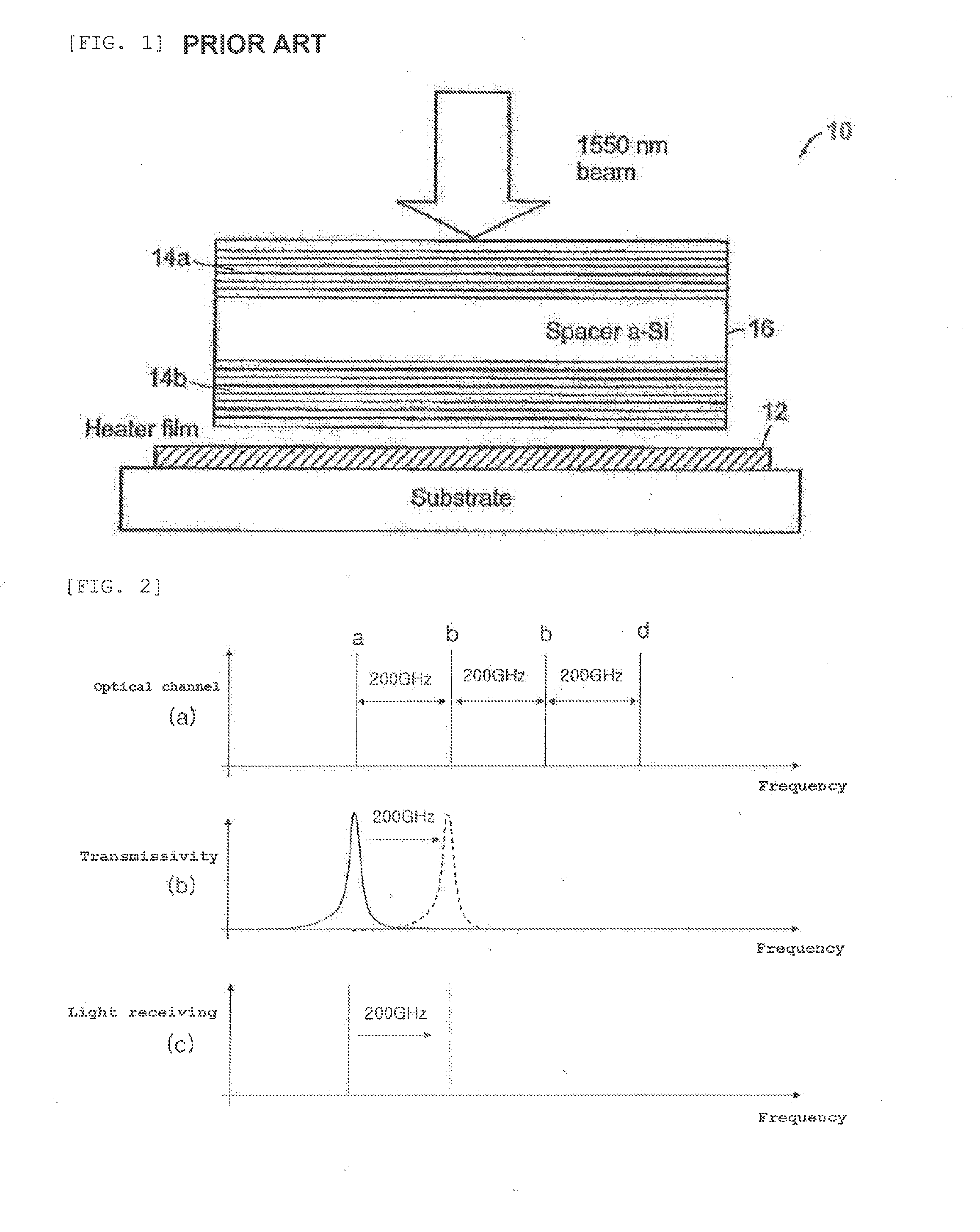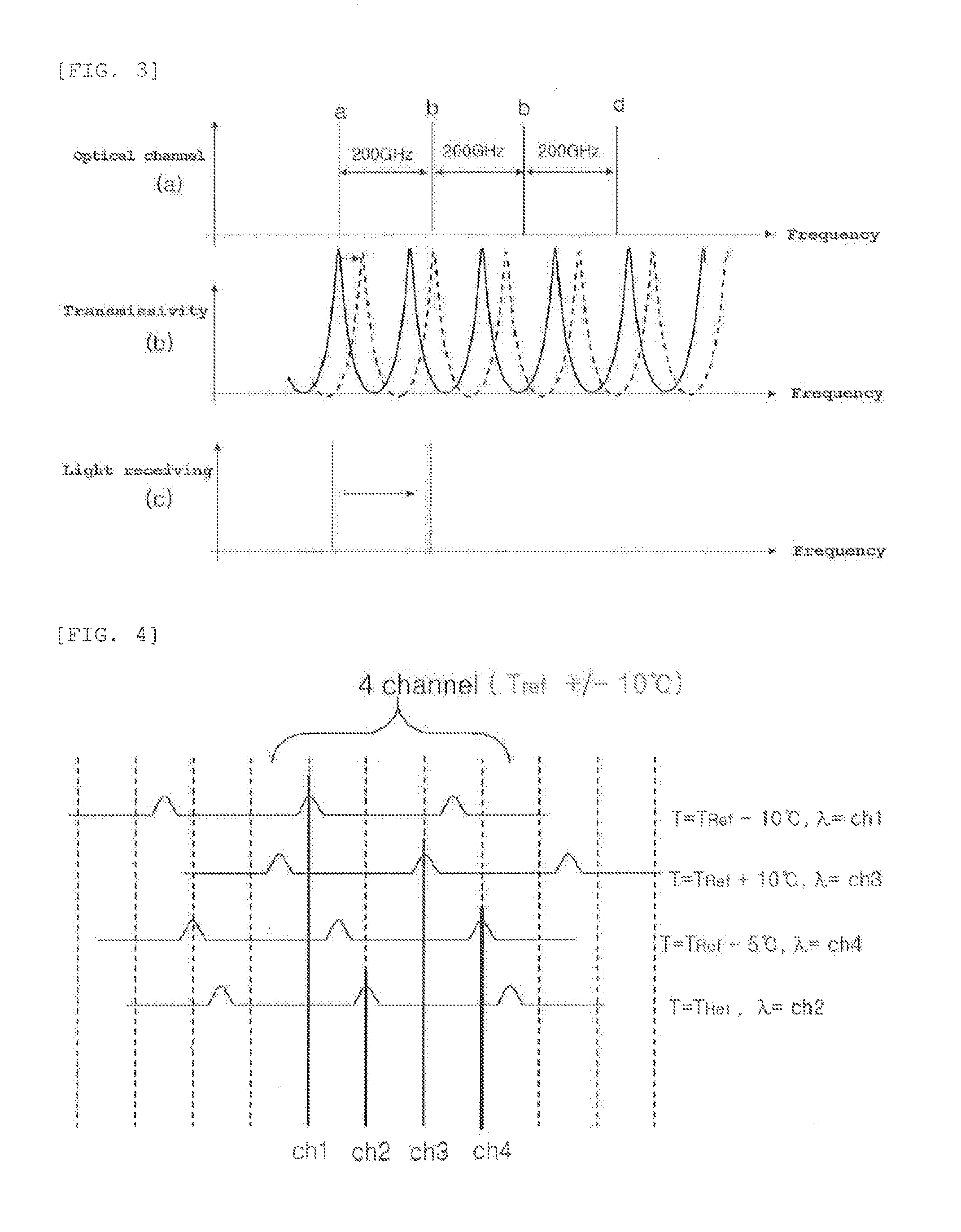Optical receiver using wavelength tunable filter
optical receiver technology, applied in the direction of static indicating devices, multiplex communication, instruments, etc., can solve the problems of difficult to manufacture a wavelength tunable filter, difficult to manage optical lines, difficult to adjust the thickness of amorphous silicon, etc., to achieve easy manufacturing and operation of filters, quick wavelength tunable characteristic, and easy to adjust optical lines
- Summary
- Abstract
- Description
- Claims
- Application Information
AI Technical Summary
Benefits of technology
Problems solved by technology
Method used
Image
Examples
Embodiment Construction
[0063]Preferred embodiments not limiting the present invention will be described hereafter in detail with reference to the accompanying drawings.
[0064]FIG. 2 is a conceptual diagram illustrating a wavelength tunable characteristic of an optical receiver using a wavelength tunable filter of the related art. In FIG. 2, in order to help understanding the present invention, an optical channel has a four-channel wavelength is used, and the channel frequency spacing is exemplified as 200 GHz, and four optical channels are indicated by a, b, c, and d, respectively.
[0065](a) of FIG. 2 illustrates four optical channels a, b, c, and d arranged with a frequency spacing of 200 GHz. (b) of FIG. 2 exemplifies a transmissive characteristic of an existing wavelength tunable filter, and an optical channel that is selected when the existing wavelength tunable filter transmits the frequency indicated by a solid line (at the left side) is the channel a in (c) of FIG. 2. In this case, an optical channel...
PUM
 Login to View More
Login to View More Abstract
Description
Claims
Application Information
 Login to View More
Login to View More - R&D
- Intellectual Property
- Life Sciences
- Materials
- Tech Scout
- Unparalleled Data Quality
- Higher Quality Content
- 60% Fewer Hallucinations
Browse by: Latest US Patents, China's latest patents, Technical Efficacy Thesaurus, Application Domain, Technology Topic, Popular Technical Reports.
© 2025 PatSnap. All rights reserved.Legal|Privacy policy|Modern Slavery Act Transparency Statement|Sitemap|About US| Contact US: help@patsnap.com



